Removal Criteria
Wire Rope Slings
Wire Rope Slings (ASME B30.9) should be removed from service if any of the following conditions are observed:
Missing or unreadable sling identification.
Broken wires, with specific criteria depending on the type of sling:
For strand-laid and single-part slings, ten randomly distributed broken wires in one rope lay, or five broken wires in one strand within a rope lay.
For cable-laid slings, 20 broken wires per lay.
For eight-part braided slings, 40 broken wires per braid.
For six-part braided slings, 20 broken wires per braid.
Severe localized abrasion or scraping.
Signs of heat damage.
Kinking, crushing, bird caging, or any other form of damage that compromises the rope structure.
End attachments that are cracked, deformed, or worn to the point where the sling's strength is significantly reduced.
Severe corrosion of the rope, end attachments, or fittings.
For hooks, refer to the removal criteria outlined in ASME B30.10.
Any other conditions, including visible damage, that raise concerns about the continued safe use of the sling.
Removal Criteria
Do you want to work with us?
Explore career opportunities that align with your goals
Wire Rope & Cables

Severe localized a Birdcaging, which occurs when the rope's tension is suddenly released, causing the strands and wires to rebound and preventing them from returning to their original positions.brasion or scraping.

Localized Wear: Localized wear can occur over an equalized sheave, posing a significant danger because it is often invisible during the rope's operation. To inspect for localized wear, the rope should be pulled off the sheave and bent to check for any broken wires.

High Strand is a condition where one or more strands are worn down before the adjoining strands. This issue is typically caused by improper socketing or seizing, as well as kinks or dog-legs in the rope.
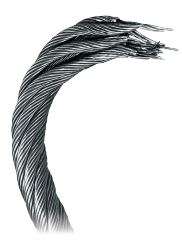
Curled refers to a condition where one or more strands are worn down before the adjoining strands. This is usually the result of improper socketing or seizing, as well as the presence of kinks or dog-legs in the rope.

Drum Crushing occurs due to the use of small drums, high loads, and multiple winding conditions. This condition can lead to the deformation and damage of the wire rope.
Broken wires, with specific criteria depending on the type of sling:

Valley Wire Breaks occur when a wire fractures between strands or a broken wire protrudes between strands. If there is more than one valley break, especially in the presence of drum crushing, the wire rope should be replaced immediately.
For mobile cranes with six- and eight-strand constructions, the wire rope should be replaced when any of the following conditions are observed: six randomly distributed broken wires within one lay length or three broken wires within a single strand in one lay length.
For overhead and gantry cranes with six- and eight-strand constructions, the wire rope should be replaced if: Twelve randomly distributed broken wires are observed within one lay length, or Four broken wires are found in a single strand within one lay length.
For sand lines, the rope should be removed from service when three broken wires are detected within one lay length.
Three broken wires are found within one lay length.
More than one broken wire is detected at the end connection.
Broken wires are observed in the valleys between the rope's strands.
Corrosion that causes pitting on the wires.
Corroded wires at the end connections.
Synthetic Slings
Missing or unreadable sling identification.
Acid or caustic burns.
Melting or charring on any part of the sling.
Holes, tears, cuts, or snags.
Broken or worn stitching in load-bearing splices.
Excessive abrasive wear.
Knots in any part of the sling.
Discoloration and brittle or stiff areas, which may indicate chemical or UV/sunlight damage.
Fittings that are pitted, corroded, cracked, bent, twisted, gouged, or broken.
For hooks, refer to the removal criteria outlined in ASME B30.10.
Any other visible damage or conditions that raise concerns about the sling’s continued safe use.
Round Slings
Missing or unreadable sling identification.
Acid or caustic burns.
Evidence of heat damage.
Holes, tears, cuts, abrasive wear, or snags that expose the core yarns.
Broken or damaged core yarns.
Weld spatter that exposes the core yarns.
Knots in the round sling.
Discoloration and brittle or stiff areas, indicating possible chemical or UV/sunlight damage.
Fittings that are pitted, corroded, cracked, bent, twisted, gouged, or broken.
For hooks, refer to the removal criteria outlined in ASME B30.10.
Any other visible damage or conditions that raise concerns about the sling’s continued safe use.
Chain Slings
An alloy steel chain sling should be removed from service if any of the following conditions are present:
Missing or unreadable sling identification.
Cracks or breaks.
Excessive wear, nicks, or gouges.
Stretched chain links or components.
Bent, twisted, or deformed chain links or components.
Evidence of heat damage.
Excessive pitting or corrosion.
Inability of the chain or components to hinge (articulate) freely.
Weld splatter.
For hooks, refer to the removal criteria outlined in ASME B30.10.
Any other visible damage or conditions that raise concerns about the sling’s continued safe use.
Fall Protection
A fall protection item should be removed from service if any of the following conditions are present:
Missing or unreadable identification tags.
Visible damage, such as cuts, frays, or abrasions in the webbing or harness.
Excessive wear on stitching or hardware components.
Evidence of chemical exposure, including discoloration or stiffness.
Any involvement in a fall incident, regardless of visible damage.
Incompatibility with other components in the fall protection system.
Failure of hardware to function correctly, such as locking mechanisms that do not engage.
Signs of excessive corrosion or degradation of metal components.
Expiration of the manufacturer's recommended service life.
Any other visible damage or conditions that raise concerns about the item's continued safe use.
For specific guidelines on inspection and removal, refer to ANSI Z359 and OSHA standards.
FAQs
Awesome services
from an industrial company
01
NIS offers a comprehensive range of services including Overhead Crane Service, Rigging Equipment, Fabrication, Lift Design (from Concept to Production Floor), Manufacturing, Machining, CNC services, Fall Protection, and Certification and Inspection adhering to OSHA & ASME Standards.
02
NIS is located at 17850 E 14 Mile Rd, Fraser, MI, 48026. Office hours are Monday – Friday, 8:00am – 5:00pm (EST). You can contact us by calling (248) 588-1828 during office hours. If you are having an after-hours crane or hoist emergency, please call us at (248) 560-6607.
03
NIS serves a diverse range of markets including Aerospace, Railroad, Construction, Waste Management, Conveyor Systems, Utilities & Power Plants, Tiedown-Transport-Towing, Powertrain, Stamping & Assembly Plants, and more.
04
Yes, NIS is a fully licensed and insured company. We also proudly hold MMBDC and WBENC certificates, showcasing our commitment to diversity and excellence.
Our Trusted Brands
NIS delivers cutting-edge blockchain solutions trusted by industry leaders. Partner with us for innovation and reliability.


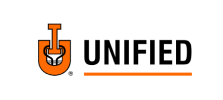
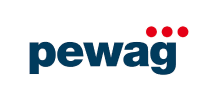





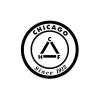

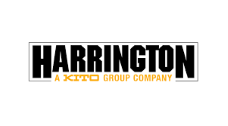




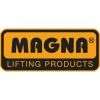

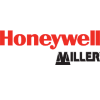




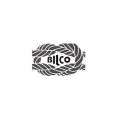

Contact Us
We are always ready
to help you and answer
your questions
Get in Touch
Contact Us